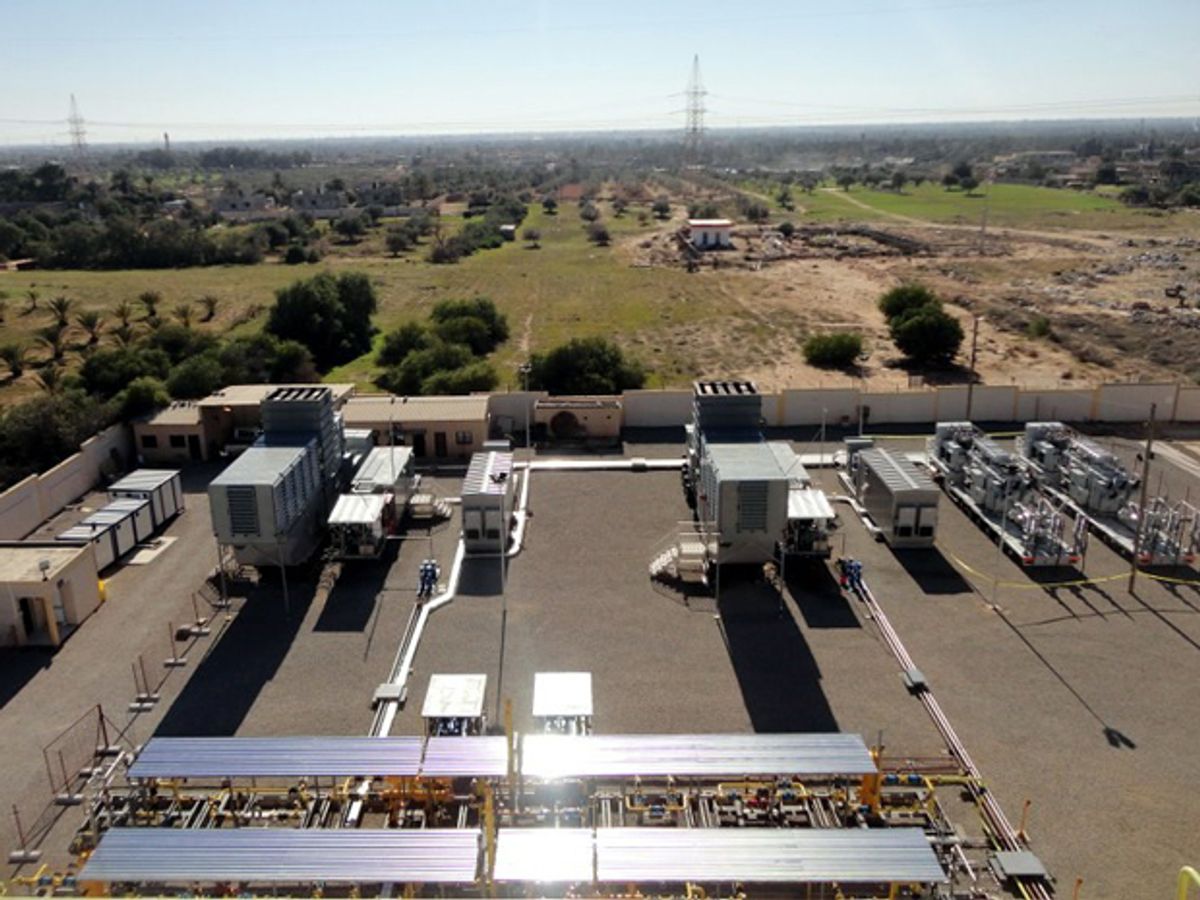When utilities needed new sources of power in the past, they planned for large, capital-intensive centralized generation that could take years to build and decades to pay off.
Big power plants are still being built, but many utilities are increasingly looking for smaller, more flexible solutions. In Libya, the General Electricity Company of Libya (GECOL), recently installed mobile backup power plants from General Electric (GE) in a matter of weeks, instead of the six-to-nine months usually required.
“We’ve done the preemptive designs, and the stocking [of hardware], and that’s made the difference,” Bob Turko, general manager of power systems at GE Digital Energy, told IEEE Spectrumat IEEE’s PES Transmission & Distribution Conference & Exposition in Chicago in April.
GE estimates that distributed power will grow 40 percent faster than global electricity demand between now and 2020. The applications will mostly be in emerging regions, but there is also a need for power that can quickly be brought onto the grid after disasters. Natural gas, and not just renewables, will likely play a significant role.
“Distributed power technologies are more widely available, smaller, more efficient and less costly today than they were just a decade ago.,” Brandon Owens, strategy and analytics leader at GE, wrote in a white paper [PDF] earlier this year. “But the rise of distributed power is also being driven by the ability of distributed power systems to overcome the constraints that typically inhibit the development of large capital projects and transmission and distribution lines.”
GE provided GECOL with 104 MW of backup power in the form of four mobile gas turbines, each of which comes with GE Digital Energy’s electrical balance of plant (EBoP) technology. GECOL needed the backup power to meet electricity demand during the sweltering summer months. The units will be used for summer peaking power demands, but GE said the mobile units could also be used to supply emergency power.
EBoP for distributed power has a modular design, so it can be scaled up depending on how much generation is needed. It includes a trailer-mounted substation with high-voltage switches, breakers and step-up transformers and control and protection devices for the turbines.
Because it is based on a standardized, modular design, the projects can be drafted and implemented in about two months. In Libya, that timeline was cut to 45 days for the first two units. It was the first time GE had engineered its mobile TM2500+ gas units complete with EBoP, according to Turko.
Stocking key components is critical to deploy distributed power stations and also to get an existing grid back up after a storm. With increased concerns about grid security in the U.S., in 2012 the federal government worked with ABB and Centerpoint Energy to cut the time to deliver extra high-voltage transmission substations from months to days. GE is investing $1.4 billion in the next four years to make distributed power systems faster to install and easier to finance.
For utilities and the power engineering companies that serve them, the next step is to cut the time even further, which is a matter of better planning and not necessarily technology innovation. “More rapid implementation is possible provided there is an available inventory of products that can be deployed immediately,” said Keith Stentiford, global sales leader at GE Digital Energy.
Some power experts are not just thinking about faster deployment for back up power, but microgrids in a box that could be deployed where there currently is no grid. At the moment, a microgrid in a box is mostly experimental, but as the prices of controls and hardware come down and standards are worked out, it could be the future for many people who currently live without regular access to electricity.




